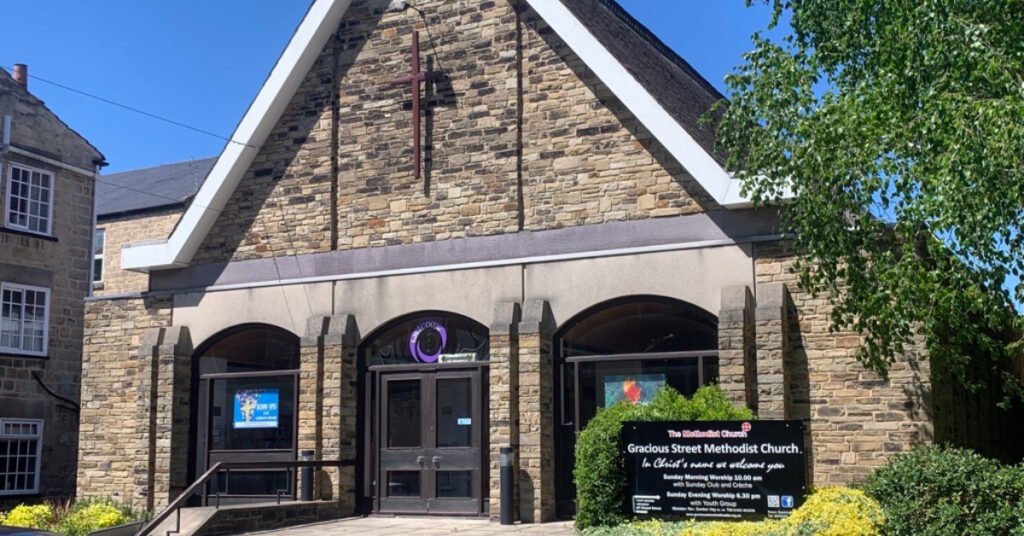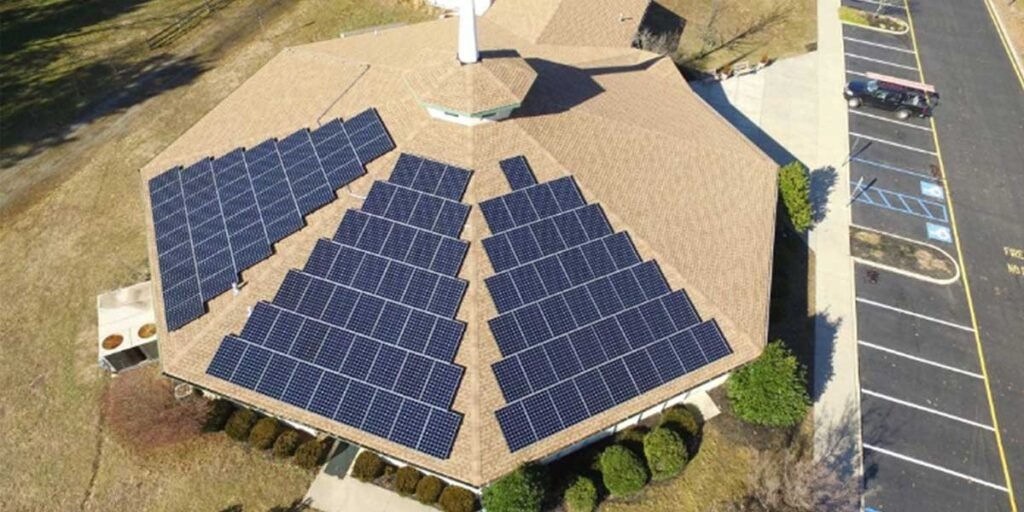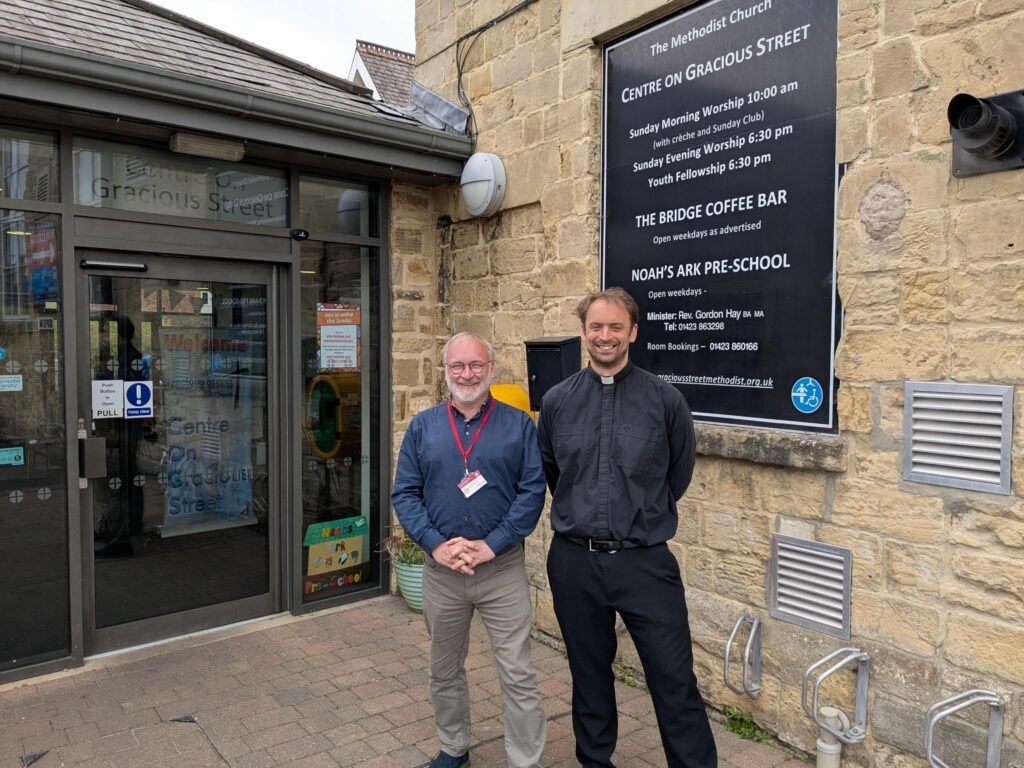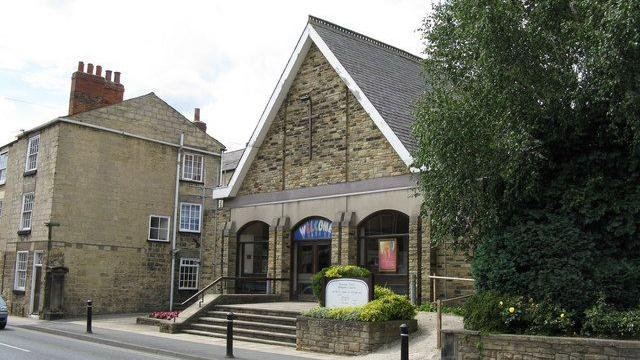Church Solar Trial Knaresborough: Pioneering Community Energy
A pioneering solar energy project, the Church solar trial Knaresborough, is underway. As part of this trial, a local church has installed 91 solar panels on its roof. The primary goal is to share excess renewable energy with nearby homes and businesses, including public services such as the town’s fire station. Rather than sending surplus power back to the National Grid, this innovative scheme keeps energy within the local area. As a result, the surrounding community benefits directly from clean and affordable electricity.

This trial is part of a bigger effort led by Ofgem, the UK’s energy regulator. The goal is to find better ways to distribute local renewable energy within neighborhoods. By generating and sharing energy in a defined local area, the project promotes sustainability. Moreover, it helps build community resilience and saves money.
Explore the Church solar trial Knaresborough, where clean, affordable energy is shared directly with local homes and businesses. This innovative community project reduces reliance on the National Grid and supports local sustainability.
How the Knaresborough Church Solar Trial Shares Renewable Energy
The Gracious Street Methodist Church in Knaresborough recently installed 91 solar panels on its roof. These panels capture sunlight and turn it into electricity for local use. A unique feature of this trial is its focus on local energy sharing. Excess electricity from the solar panels doesn’t go back to the National Grid. Instead, it is redirected to 78 nearby homes, small businesses, and public services such as the fire station.
This means that the energy produced in the immediate vicinity is used locally, reducing transmission losses and enhancing energy efficiency. This approach stabilizes the local electricity network and lowers carbon emissions. Moreover, this approach empowers communities to actively participate in the transition to renewable energy. Consequently, it fosters greater local involvement and ownership in sustainable practices. In addition, such engagement helps build a stronger, more resilient community committed to environmental stewardship.
The Vision Behind the Church Solar Panels Trial in Knaresborough: Community Energy and Environmental Responsibility
Reverend Gordon Hay of Gracious Street Methodist Church is excited about the project’s potential to unite the community through energy sharing. He said, “Sharing energy with our neighbours—people who live or work just around the corner—feels like exactly what a church should do.”
The church’s leaders and congregation wanted to do more for their community beyond traditional roles. In doing so, they embraced the church as both a spiritual and energy hub. This project fits with the Methodist commitment to environmental care and social justice. It shows how faith communities can lead on climate action and local sustainability.
Benefits of Local Energy Sharing in the Church Solar Panels Trial for Knaresborough Residents and Businesses
The scheme offers multiple advantages for local residents and businesses. First, it provides clean, renewable electricity generated nearby. This reduces reliance on fossil fuels and the national grid. Consequently, it can lower energy bills because local power typically costs less than grid electricity due to fewer distribution fees.

Moreover, by keeping energy local, the scheme eases pressure on the wider energy infrastructure. This could delay or eliminate the need for costly upgrades like new pylons or underground cables. These are usually needed to carry electricity over long distances.
Furthermore, local energy sharing strengthens grid resilience. In fact, during peak demand or emergencies, communities with local power and storage can maintain electricity supply more reliably.
Ofgem’s Role in Driving Renewable Energy Innovation
Ofgem, the UK’s energy regulator, commissioned this and other trials to explore innovative ways to integrate renewable energy more effectively into local electricity systems. As the UK aims to reach net zero carbon emissions by 2050, such initiatives are vital to testing new technologies and business models that promote equitable access to clean energy.
The Knaresborough project is part of a suite of community energy trials across the country that are helping to pave the way for a smarter, more decentralized energy future. These projects test how solar power, battery storage, and smart meters can work together to optimize energy distribution and empower consumers.
Knaresborough Community Energy: Leading Local Renewable Initiatives
Additionally, the overall scheme includes similar solar panel projects at two other local sites. It is led by Knaresborough Community Energy, a group committed to promoting renewable energy and sustainability in the area. Their work supports community ownership and benefits, creating opportunities for residents to engage directly with energy production and management.
Mr. Hay remarked, “It started with members of the congregation asking, ‘what more can we do?’ We’re already a community hub – now we can be an energy hub too.” This demonstrates how grassroots enthusiasm and collaboration can drive impactful environmental projects.
Economic and Environmental Impact of Solar Panels on Community Buildings
Installing solar panels on community buildings like churches offers a dual benefit: environmental sustainability and financial savings.As a result, the panels installed over the Easter period will significantly reduce the church’s energy costs. Savings can be reinvested into community services, enhancing the church’s role as a local resource center.
Environmentally, the shift from grid-supplied electricity—often generated from fossil fuels—to locally generated solar power reduces carbon emissions and air pollution, contributing to healthier local environments and combating climate change.
The Role of the Yorkshire North & East Methodist District in Promoting Net Zero
Tim O’Brien, Net Zero Officer for the Yorkshire North & East Methodist District, highlighted the broader vision for the project. “This is about building a smarter, more community-focused energy system. Instead of relying on energy from distant sources, we generate it here in Knaresborough and use it locally — thereby saving money and reducing waste.

The Methodist District supports churches and communities across the region in adopting renewable energy and sustainable practices, advancing the church’s commitment to net zero carbon emissions.
How Local Renewable Energy Trials Could Shape the Future of Power Distribution
Trials like the one in Knaresborough provide critical insights into the future of electricity distribution. By demonstrating how renewable energy can be generated and shared locally, they support a shift away from the centralized, large-scale power plants of the past toward a distributed, community-based model.
This could revolutionize how energy is priced, managed, and consumed—making energy systems more flexible, affordable, and environmentally friendly.
Upcoming Community Engagement: The Great Big Green Week Exhibition
Local residents interested in learning more about the solar panel scheme and how it benefits Knaresborough can attend an exhibition at Gracious Street Methodist Church on Saturday, 7 June, as part of the Great Big Green Week. This event will provide information, answer questions, and encourage wider community involvement in sustainable energy initiatives.
Mr. Hay expressed the project’s grounding in simple, positive action: “In a world that often feels uncertain, this is something positive and grounded. It’s not about grand statements. It’s about doing the right thing – for your neighbours, your town, and your future.”
A Model for Community-Led Renewable Energy
The Knaresborough church solar panels trial exemplifies how local institutions can lead the way in renewable energy adoption, sharing benefits directly with their communities. By fostering collaboration, environmental responsibility, and economic savings, such projects offer a scalable model for towns and cities across the UK and beyond.
As the energy landscape evolves, community energy initiatives like this will be vital to building a more sustainable, equitable, and resilient future for all.




